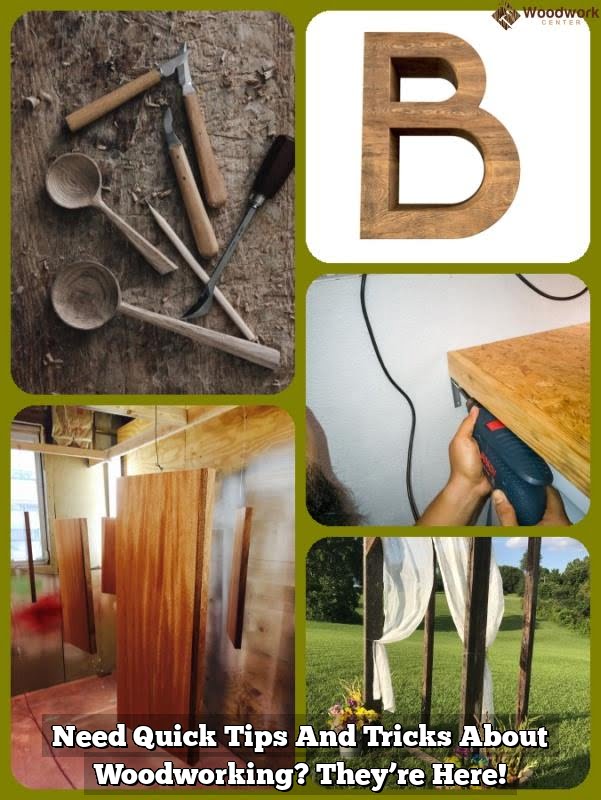Are you tired of constantly dealing with a clogged shopvac while woodworking? If you’re wondering how to keep shopvac from clogging so quick on woodworking, you’re not alone. It can be incredibly frustrating when your shopvac gets clogged frequently, slowing down your work and causing unnecessary hassle. In this article, we’ll explore the reasons why shopvacs clog quickly during woodworking and provide essential tips and techniques to prevent clogs, as well as troubleshoot them when they occur.
Woodworking often results in a quick buildup of dust, debris, and shavings that can easily clog a shopvac. Understanding the specific challenges associated with woodworking and how they contribute to quick clogging is crucial for finding effective solutions. By learning more about these challenges and the impact they have on shopvacs, you can take proactive steps to keep your equipment running smoothly and efficiently.
Proper maintenance is key to preventing shopvac clogs. From choosing the right model for woodworking to using attachments and accessories for better dust collection, there are several steps you can take to minimize the risk of clogs. Additionally, selecting the right filter for your shopvac can also make a significant difference in reducing clogs and improving overall performance. By implementing best practices for woodworking and troubleshooting potential issues, you can create a clog-free environment in your workshop.
Understanding the Problem
Woodworking is a rewarding and fulfilling hobby, but it often comes with the frustration of dealing with a clogged shopvac. Understanding why woodworking results in quick clogging is the first step toward finding solutions to this common problem.
The main reason woodworking often leads to quick clogging of shopvacs is the nature of the debris generated during the process. Woodworking typically produces a large volume of fine dust and shavings that can quickly accumulate and clog the filters and hoses of a shopvac. Unlike larger particles found in regular household cleaning, these finer wood particles are more prone to getting stuck in the nooks and crannies of your vacuum, leading to reduced suction power and frequent clogs.
To keep your shopvac from clogging so quickly on woodworking projects, one essential tip is to invest in a high-quality dust separator or cyclone attachment. These accessories work by separating the dust and debris from the airflow before it reaches your shopvac, effectively reducing the amount of material that enters the vacuum itself. This not only prevents clogs but also improves the overall efficiency and lifespan of your shopvac.
In addition to using a dust separator, another important factor in preventing quick clogs is proper positioning and setup of your shopvac during woodworking tasks. Placing the shopvac as close as possible to your tools or work area can help capture more dust before it has a chance to settle elsewhere in your workshop. Regularly emptying the shopvac’s collection bin or bag will also help maintain optimal airflow and prevent excessive buildup that could lead to clogs.
| Reason for Quick Clogging | Solution |
|---|---|
| Fine wood particles accumulating in filters and hoses | Investing in a high-quality dust separator or cyclone attachment |
| Inefficient setup and positioning of shopvac during woodworking tasks | Properly placing the shopvac closer to tools and regularly emptying collection bin or bag |
Proper Shopvac Maintenance
Woodworking can be a messy job, and the dust and debris generated during the process can quickly lead to clogs in your shopvac. However, there are several steps you can take to prevent this frustrating issue and keep your shopvac running smoothly. Here are some essential tips for proper shopvac maintenance to prevent clogs.
First and foremost, it’s important to empty your shopvac regularly, especially during heavy woodworking projects. A full vacuum can lead to decreased suction power, which in turn can cause clogs. Additionally, make sure to check and clean the filter regularly. This is crucial for maintaining proper airflow and preventing clogs caused by a dirty or worn-out filter.
Another important tip is to use the right attachments and accessories for woodworking. For example, using a dust collection bag or a cyclone attachment can help trap larger particles before they reach the vacuum, reducing the risk of clogs. Furthermore, consider investing in antistatic hoses and attachments to prevent dust buildup that can lead to clogging.
Regular maintenance of your shopvac is also key in preventing quick clogging on woodworking projects. Clean the hoses and attachments after each use, and inspect them for any potential blockages or damage. By following these essential tips for proper shopvac maintenance, you can significantly reduce the likelihood of experiencing frequent clogs during woodworking.
| Proper Shopvac Maintenance Tips | Preventing Clogs |
|---|---|
| Empty shopvac regularly | Optimizes suction power |
| Clean and replace filter regularly | Maintains proper airflow |
| Use appropriate attachments and accessories | Traps larger particles before reaching vacuum |
Upgrading Your Shopvac
When it comes to woodworking, having the right shopvac can make all the difference in preventing quick clogging. Upgrading your shopvac to a model specifically designed for woodworking can significantly reduce the frequency of clogs and improve overall performance.
Consider a High-Capacity Shopvac
One of the biggest factors contributing to quick clogging in shopvacs used for woodworking is the capacity of the vacuum. Woodworking produces a large amount of dust and debris, which can quickly fill up smaller shopvacs, leading to frequent clogs. Upgrading to a high-capacity shopvac with a larger drum or bin can help alleviate this issue by allowing you to collect more debris before needing to empty the vacuum.
Look for Strong Suction Power
Another important factor to consider when upgrading your shopvac for woodworking is the suction power. Woodworking often involves heavy-duty tasks that create finer wood dust particles, which can easily clog a weaker shopvac. Look for a model with strong suction power specifically designed for handling fine particles commonly produced in woodworking projects.
Invest in a HEPA Filter Shopvac
In addition to capacity and suction power, consider investing in a shopvac with a HEPA filter. HEPA filters are designed to capture smaller particles, making them ideal for capturing fine wood dust without clogging as quickly. This can be especially beneficial if you have allergies or respiratory issues, as it will help improve air quality in your workshop while reducing clogs and maintenance.
Effective Dust Collection
When it comes to preventing your shopvac from clogging quickly during woodworking, effective dust collection is key. Properly collecting and containing sawdust and debris can make a significant difference in the performance of your shopvac. Here are some tips for using attachments and accessories to improve dust collection:
- Use a dust collection system: Invest in a dedicated dust collection system that connects to your woodworking tools, such as table saws, routers, and sanders. These systems are designed to capture sawdust at the source, preventing it from entering your shopvac.
- Attach a cyclone separator: A cyclone separator works by creating a high-speed vortex that separates heavier particles from the air stream before they reach the shopvac. This can significantly reduce the amount of debris that enters the vacuum, preventing clogs.
- Utilize a dust deputy: Similar to a cyclone separator, a dust deputy is a small attachment that can be added to your shopvac setup. It helps to separate large debris and sawdust before they reach the vacuum, improving its overall performance and reducing clogging.
In addition to using attachments and accessories, it’s important to ensure that your shopvac’s hose and attachments are free from any obstructions or build-up of debris. Regularly inspecting and cleaning these components can help prevent clogs and maintain optimal suction power.
By implementing these strategies for effective dust collection, you can minimize the amount of sawdust and debris that enters your shopvac during woodworking projects. This will not only help prevent clogs but also improve the overall performance and longevity of your shopvac.
Choosing the Right Filter
When it comes to preventing your shopvac from clogging quickly during woodworking, the type of filter you use plays a crucial role. Choosing the right filter can have a significant impact on the amount of dust and debris that is collected, ultimately affecting how quickly your shopvac clogs. Here are some key considerations when choosing the right filter for your shopvac:
- Filter Material: Consider the material of the filter, such as paper, cloth, or HEPA (High Efficiency Particulate Air). Each material has its own benefits and drawbacks in terms of filtration efficiency and susceptibility to clogging. HEPA filters are especially effective at trapping small particles but may require more frequent cleaning or replacement.
- Filtration Rating: Pay attention to the filtration rating of the filter, which indicates its effectiveness at capturing particles of different sizes. A higher filtration rating means smaller particles are captured, reducing the likelihood of clogging.
- Compatibility: Ensure that the filter you choose is compatible with your specific shopvac model. Some filters are designed to work with certain types of shopvacs and using an incompatible filter can result in poor performance and increased clogging.
In addition to choosing the right type of filter, proper maintenance is also essential for preventing quick clogs. Regularly cleaning or replacing your filter according to the manufacturer’s recommendations will help maintain optimal suction power and minimize clogging issues. By taking these factors into consideration when selecting a filter for your shopvac, you can effectively reduce the frequency of clogs and improve its overall performance during woodworking projects.
Best Practices for Woodworking
Woodworking can be a messy job, and one of the biggest challenges is dealing with the dust and debris that is created during the process. This debris can quickly clog up your shopvac, leading to frustration and lost time as you stop to unclog it. Fortunately, there are several best practices that you can implement to minimize dust and debris in your workshop, ultimately helping to keep your shopvac from clogging so quickly.
Use Dust Collection Systems
Investing in a good dust collection system can make a world of difference in keeping your workshop clean and your shopvac running smoothly. By capturing the dust at its source, before it has a chance to spread around the workshop, you can greatly reduce the amount of debris that ends up in your shopvac.
Work Smart
While woodworking, try to work in a way that minimizes the amount of dust that is created. For example, using sharp tools and making cuts slowly and intentionally can help reduce the amount of sawdust produced. Additionally, consider using hand tools instead of power tools whenever possible, as they tend to generate less dust.
Clean as You Go
Finally, make it a habit to clean up as you work. Taking a few minutes to sweep up sawdust or vacuum around your work area throughout the day can prevent large build-ups of debris that could eventually clog your shopvac. By staying on top of the mess as you go, you can help keep your shopvac running smoothly for longer periods of time.
By implementing these best practices for woodworking and minimizing dust and debris in your workshop, you can ultimately reduce the frequency at which your shopvac clogs up. This will not only save you time and frustration but also prolong the life of your shopvac.
Troubleshooting Clogs
When despite taking all the necessary precautions and following maintenance tips, your shopvac still clogs quickly, it can be incredibly frustrating. However, there are several troubleshooting steps you can take to address this issue and keep your shopvac functioning effectively.
One of the first things to check when troubleshooting clogs is the hose and attachments. Oftentimes, debris can get stuck in these parts, causing a blockage that prevents proper suction. Take some time to inspect the hose and attachments, removing any debris or obstructions that you find. Additionally, make sure that the hose and attachments are properly connected and secured to the shopvac to ensure optimal performance.
Another common reason for quick clogging in shopvacs is a full or improperly installed filter. If your shopvac has a filter, check to see if it is full and needs replacement. Additionally, ensure that the filter is installed correctly according to the manufacturer’s instructions. A dirty or incorrectly installed filter can significantly impact the airflow and suction power of the shopvac, leading to quick clogging.
In some cases, despite taking all these troubleshooting steps, your shopvac may still clog quickly on woodworking projects. If this happens, it may be time to consider upgrading to a more powerful model specifically designed for woodworking applications.
Look for a shopvac with higher suction power and better dust collection capabilities to better handle the demands of woodworking projects while minimizing clogs. Remember that investing in a quality shopvac designed for woodworking can make a significant difference in reducing clogs and improving overall efficiency.
By following these troubleshooting steps and considering an upgrade if necessary, you can effectively address the problem of quick clogging in your shopvac and enjoy smoother woodworking experiences without constant interruptions for cleaning or unclogging.
Conclusion
In conclusion, keeping your shopvac from clogging so quickly when woodworking is entirely possible with the right knowledge and tools. By understanding the reasons why woodworking results in quick clogging, you can take proactive steps to prevent it. Proper shopvac maintenance is crucial, and following essential tips such as emptying the canister regularly, checking for blockages, and using a cyclone separator can significantly reduce the frequency of clogs.
Upgrading to a shopvac model specifically designed for woodworking and effective dust collection can also make a noticeable difference. Using attachments and accessories such as a dust deputy or a HEPA filter can improve your shopvac’s performance and reduce clogging. Additionally, implementing best practices for woodworking, such as using dust containment systems and controlling airflow, can help minimize dust and debris in your workshop.
By choosing the right filter for your shopvac and troubleshooting any persistent issues with clogs, you can work towards enjoying a clog-free workshop. With diligence in maintenance, the right equipment upgrades, effective dust collection practices, and proper woodworking techniques, you can keep your shopvac from clogging so quickly on woodworking projects. Take these measures into account to ensure that your workshop remains clean and efficient, allowing you to focus on your craft without interruptions caused by clogged shopvacs.
Frequently Asked Questions
Is It OK to Use Shop Vac Without Filter?
It is not recommended to use a Shop Vac without a filter. The filter is essential for trapping dust, debris, and other particles to prevent them from being blown back into the air.
How Do I Unclog My Shopvac?
To unclog your Shopvac, start by turning it off and disconnecting it from the power source. Then, remove the hose and use a straightened coat hanger or plumbing snake to dislodge any blockages. You can also try using a shop vacuum with a smaller attachment.
How Do I Stop My Shop Vac From Shooting Dust?
If your Shop Vac is shooting dust, it may be due to a clogged filter or an issue with the seal. Make sure to clean or replace the filter regularly to prevent dust from escaping. Also, check for any gaps in the seal and address them to stop dust leakage.

Hi everyone! I’m a woodworker and blogger, and this is my woodworking blog. In my blog, I share tips and tricks for woodworkers of all skill levels, as well as project ideas that you can try yourself.





